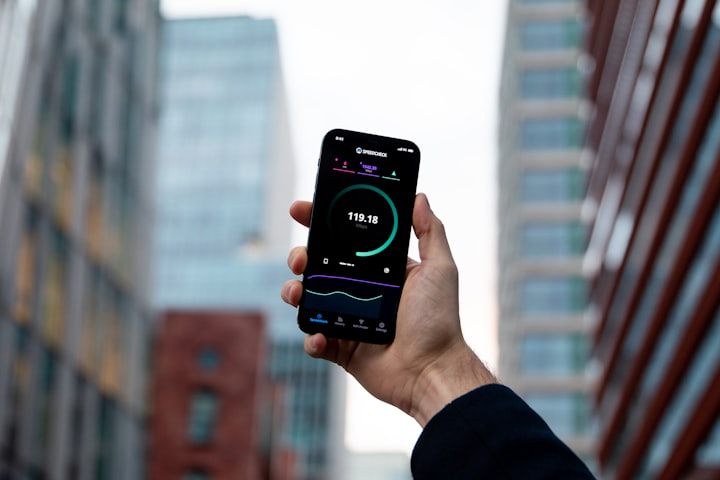Understanding the Differences Between 3G, 4G, and 5G Mobile Networks
How the Evolution of Mobile Network Technology is Changing the Way We Connect and Communicate

Introduction:
Wireless communication technology has evolved tremendously in the last decade. The evolution has seen the development of various mobile network generations, which have allowed faster data transfer rates, improved connectivity, and better user experiences. The most popular mobile network generations include 3G, 4G, and the latest addition, 5G. While all these generations share some similarities, there are significant differences between them. This article will explore these differences and help you understand what sets them apart.
Speed and Bandwidth
One of the most significant differences between these three mobile network generations is their speed and bandwidth. 3G is the oldest of the three, and it has a theoretical download speed of up to 7.2 Mbps. 4G, on the other hand, boasts of a download speed of up to 100 Mbps. Finally, 5G is expected to offer a download speed of up to 20 Gbps, which is incredibly fast. It means that 5G will be able to transfer data almost instantaneously, making it ideal for real-time applications such as virtual reality and autonomous vehicles.
Latency
Latency refers to the time it takes for a device to send a request to the network, and the network responds. The lower the latency, the faster the network response time. 3G has a latency of around 100 milliseconds, while 4G's latency is around 30-50 milliseconds. 5G's latency is even lower, with response times as low as 1 millisecond. The low latency of 5G will allow for real-time communication, which is ideal for applications such as remote surgery and gaming.
Spectrum
Another significant difference between these three mobile network generations is the spectrum they use. 3G primarily uses the 2.1 GHz band, while 4G uses a combination of frequencies ranging from 700 MHz to 2.7 GHz. 5G, on the other hand, uses a broader range of frequencies, including low, medium, and high-band frequencies. The use of higher frequencies in 5G is particularly important since it allows for higher bandwidths, which translate to faster data transfer rates.
Network Infrastructure
The infrastructure required to support 5G is quite different from that of 3G and 4G. 5G uses small cell technology, which involves the installation of numerous small cells rather than a few large ones. This approach allows for more efficient use of the available spectrum and faster data transfer rates. 3G and 4G, on the other hand, use larger cell towers that cover larger areas but are less efficient in terms of spectrum usage.
Coverage and Availability
Finally, the coverage and availability of these mobile network generations also differ. 3G has a wider coverage area than 4G and 5G, making it more widely available in rural areas. However, 3G's coverage is not as reliable as that of 4G and 5G, and it often experiences dropped calls and slow data transfer rates. 4G and 5G have a more limited coverage area, but their coverage is more reliable, and they offer faster data transfer rates.
5G:
5G is the latest generation of mobile network technology, and it comes with a range of new features and capabilities that were not possible with earlier generations. Some of the latest features of 5G include:
- Faster download and upload speeds: 5G offers significantly faster download and upload speeds than earlier generations, with theoretical speeds of up to 20 Gbps download and 10 Gbps upload.
- Lower latency: 5G has much lower latency than earlier generations, which means that there is much less delay between when a user sends a request and when the network responds. This makes 5G ideal for real-time applications such as virtual reality, gaming, and remote surgery.
- Increased network capacity: 5G offers increased network capacity, which means that more devices can connect to the network at the same time without affecting performance.
- Improved coverage: 5G uses a range of frequencies, including high-band frequencies, which can provide better coverage in urban areas where there are more obstacles to signal transmission.
- Network slicing: 5G allows for network slicing, which means that operators can create virtual networks tailored to specific applications or use cases. This can help to improve network efficiency and reduce costs.
- Enhanced security: 5G offers enhanced security features, including improved encryption and authentication protocols, to protect against cyber threats and attacks.
- Support for IoT devices: 5G is designed to support the massive number of IoT devices that are expected to be connected to the network in the coming years. This includes devices such as smart homes, wearable devices, and autonomous vehicles.
- Edge computing: 5G enables edge computing, which means that some processing tasks can be performed closer to the edge of the network, rather than in centralized data centers. This can help to reduce latency and improve the user experience.
Overall, the latest features of 5G represent a significant improvement over earlier generations of mobile network technology. As 5G continues to be deployed and expanded, we can expect to see even more innovative applications and use cases that will transform the way we live, work, and communicate.
Conclusion:
In conclusion, the differences between 3G, 4G, and 5G are significant, and each generation has its strengths and weaknesses. 3G is the oldest and offers the widest coverage, but it has slower data transfer rates and lower reliability. 4G is faster and more reliable, but it has limited coverage, while 5G promises to be the fastest and most reliable, but it is not yet widely available. As technology continues to evolve, we can expect to
About the Creator
YathirajaSampathKumar K R
Hello everyone, my name is YathirajaSampathKumar K R and I am a business man, software architect, and NFT creator with 12 years of experience. In addition to my professional pursuits, I am also an author, writing motivational stories.






Comments
There are no comments for this story
Be the first to respond and start the conversation.